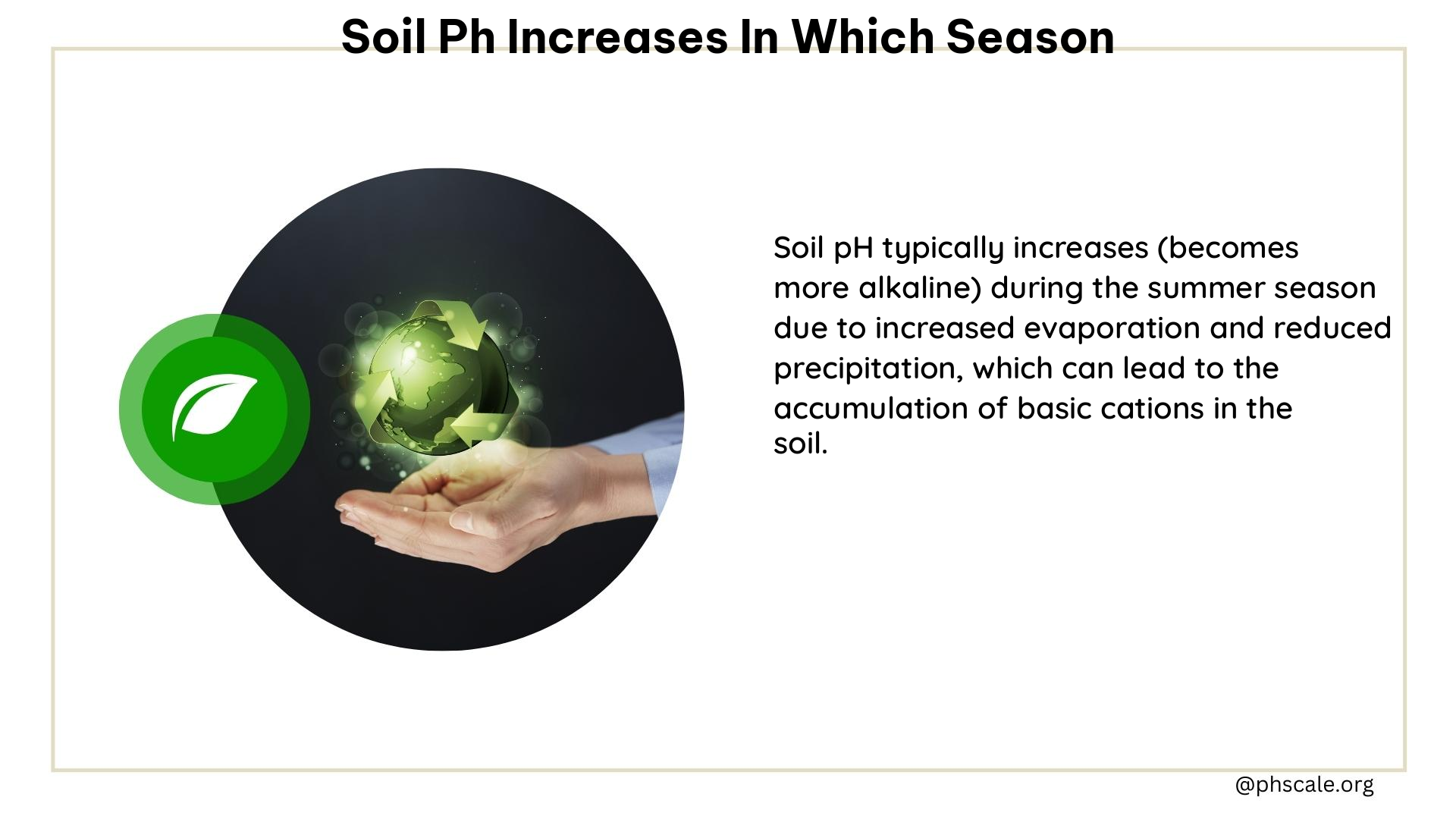Soil pH, a crucial factor in plant growth and soil health, can exhibit significant seasonal variations. Understanding these patterns is essential for effective soil management and optimizing agricultural productivity. In this comprehensive blog post, we will explore the factors that contribute to soil pH increases during specific seasons, providing valuable insights for gardeners, farmers, and land managers.
Factors Influencing Seasonal Soil pH Increases
Tropical Monsoon Climate
In regions with a tropical monsoon climate, soil pH can fluctuate between the wet and dry seasons. During the dry season, soil pH may increase due to reduced rainfall, which can lead to higher sodium levels and less leaching of nutrients. Conversely, during the wet season, soil pH may decrease as rainfall increases and nutrients are leached away.
Winter Temperature Rise
In areas with significant winter temperature increases, soil pH can rise. A study found that winter temperature increases of 0.5°C to 2.0°C led to a rise in soil pH by 0.42 to 0.67 units compared to no temperature increase. This phenomenon is attributed to the impact of temperature on soil chemical and biological processes.
General Seasonal Trends
While there is no universal rule for soil pH changes across all seasons, some general trends can be observed. In regions with distinct seasonal patterns, soil pH might be more acidic during winter and less acidic during summer and autumn. This could be due to factors such as changes in soil moisture, microbial activity, and nutrient availability.
Intensive Farming Practices
Intensive farming practices during certain seasons can contribute to soil acidification. For instance, the use of nitrogen fertilizers can lower soil pH over time, especially if not balanced with lime applications. This highlights the importance of sustainable farming practices and soil pH management.
Seasonal Soil pH Monitoring and Management

To effectively manage soil pH, it is crucial to conduct regular soil tests, ideally every three to five years. This allows for adjustments to be made before planting, ensuring optimal soil conditions for plant growth.
Soil Testing Techniques
Various soil testing techniques can be employed to assess soil pH levels, including:
- pH Meter: A pH meter is a widely used tool that provides a direct measurement of soil pH.
- Soil Test Kits: Affordable and easy-to-use soil test kits are available, allowing gardeners and farmers to monitor soil pH at home.
- Laboratory Analysis: For more comprehensive soil analysis, sending samples to a professional laboratory can provide detailed information on soil pH and other nutrient levels.
Soil pH Adjustment Strategies
Depending on the soil pH levels, various strategies can be employed to adjust and maintain optimal soil pH:
- Liming: Adding lime (calcium carbonate or dolomitic lime) to the soil can increase pH and neutralize acidity.
- Organic Matter Addition: Incorporating organic matter, such as compost or well-rotted manure, can help buffer soil pH and improve overall soil health.
- Fertilizer Selection: Choosing fertilizers with a neutral or alkaline pH can help maintain or increase soil pH over time.
- Cover Cropping: Growing cover crops can help improve soil structure and nutrient cycling, which can indirectly influence soil pH.
Conclusion
Soil pH is a dynamic property that can fluctuate with the seasons, influenced by factors such as climate, temperature, and farming practices. By understanding the seasonal patterns of soil pH increases, gardeners, farmers, and land managers can make informed decisions to optimize soil conditions and enhance plant growth and productivity.
Regular soil testing, coupled with strategic soil pH management techniques, is crucial for maintaining a healthy and balanced soil ecosystem. By staying attuned to the seasonal changes in soil pH, you can ensure your plants thrive and your land remains productive throughout the year.
References:
- https://www.asianturfgrass.com/post/seasonal-soil-ph-change/
- https://journals.sagepub.com/doi/pdf/10.4137/ASWR.S8599
- https://extension.psu.edu/understanding-soil-ph
- https://blog-fruit-vegetable-ipm.extension.umn.edu/2021/10/does-your-soil-have-high-ph-fall-is.html
- https://www.researchgate.net/post/What_might_be_the_reason_for_low_soil_pH_more_acidic_during_winter_as_compared_to_higher_valuesless_acidic_during_summer_and_autumn.
